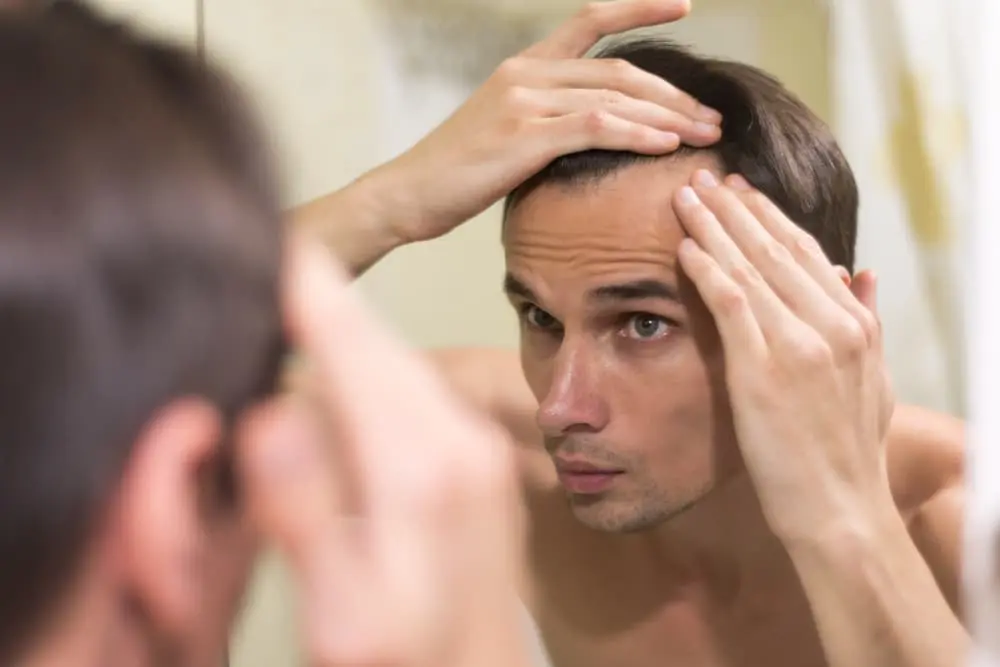
Male pattern hair loss, medically known as androgenetic alopecia, is a common condition that affects millions of men worldwide, leading to significant hair thinning and loss. This condition is primarily driven by genetic predisposition and hormonal factors, notably the sensitivity of hair follicles to dihydrotestosterone (DHT), a derivative of testosterone.
The progression of male pattern hair loss is typically categorized into several stages, each reflecting the extent and pattern of hair loss. Despite its prevalence and the psychological impact it can have, there are several effective hair treatments available today. These range from topical applications and oral medications to advanced surgical procedures like hair transplantation, offering hope and solutions to those affected.
What is Male Pattern Hair Loss (MPHL)?
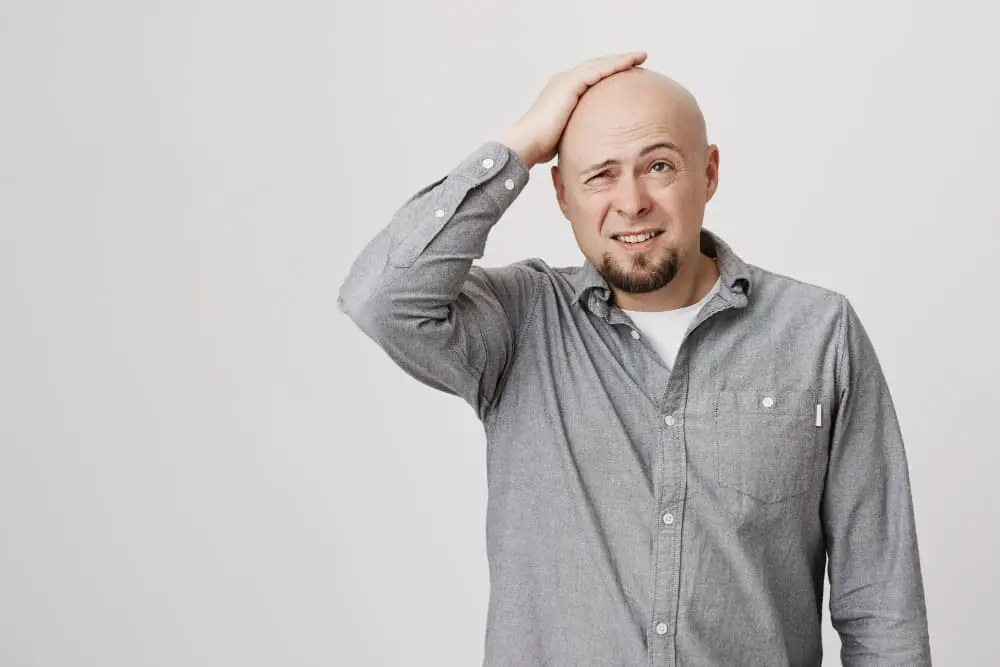
Male pattern hair loss (MPHL), also known as Androgenetic Alopecia, is the most prevalent form of hair loss in men, characterized by a receding hairline and thinning crown, which often progresses to partial or complete baldness. This condition can affect men as early as their teens or early twenties and is particularly common by the age of 50, impacting approximately 50% of men globally.
The primary culprits behind MPHL are genetic factors and hormonal influences, specifically the hormone dihydrotestosterone (DHT), a more potent form of testosterone. DHT’s effects on hair follicles are largely responsible for the thinning and eventual hair loss seen in MPHL.
Androgenetic Alopecia (AGA): The Science Behind Male Pattern Baldness
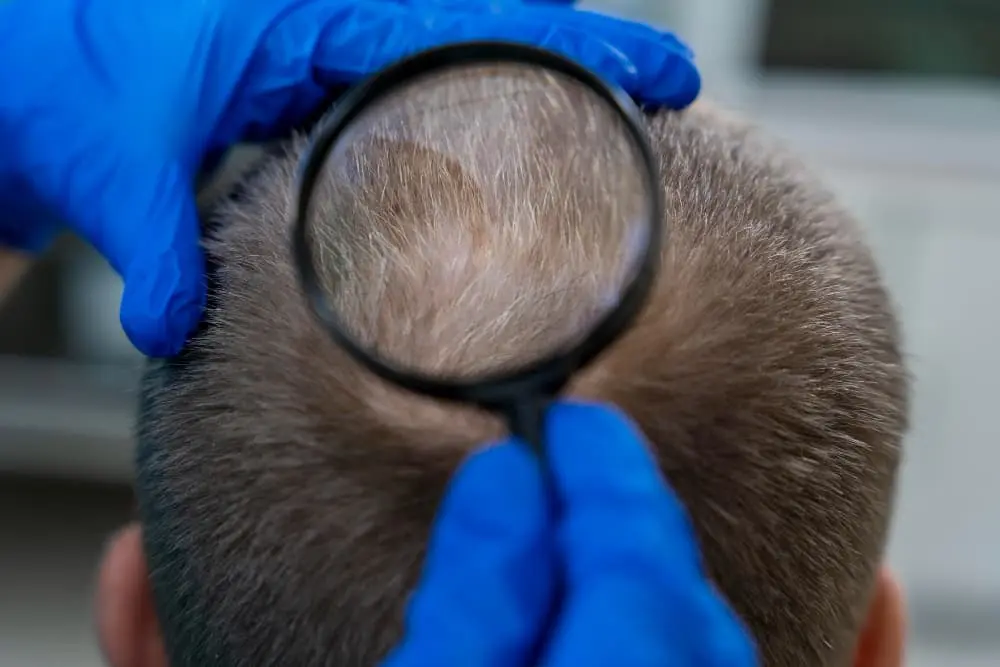
Androgenetic Alopecia or male pattern baldness occurs due to genetically predetermined sensitivity to the effects of DHT on scalp hair follicles. In individuals with this predisposition, DHT binds to receptors in the hair follicle, causing them to shrink and eventually cease producing hair. This process is known as follicular miniaturization and results in the lifecycle of the hair becoming shorter until the affected follicles stop producing visible hair altogether.
Causes of Male Pattern Hair Loss
The strongest predictor of MPHL is heredity. The condition is associated with genes inherited from either parent, which influence how hair follicles respond to DHT. If a close family member has MPHL, the risk of developing similar hair loss increases significantly.
Hormonal Changes
The transformation of testosterone into DHT by the enzyme 5-alpha-reductase in the hair follicles is a key factor in hair loss. High levels of DHT shorten the growth phase of hair, leading to thinner and shorter hair strands.
Lifestyle and Environmental Influences
Although genetic predisposition is the primary cause, lifestyle choices such as diet, stress, smoking, and exposure to environmental pollutants can exacerbate hair loss. For instance, high-stress levels can increase the production of certain hormones and inflammatory markers that could worsen hair thinning.
Stages of Male Pattern Hair Loss
The Norwood Scale is a diagnostic tool used to measure the degree of male pattern baldness. It ranges from Stage 1 (little to no loss) to Stage 7 (severe hair loss at the crown and the hairline receding back to the base of the head).
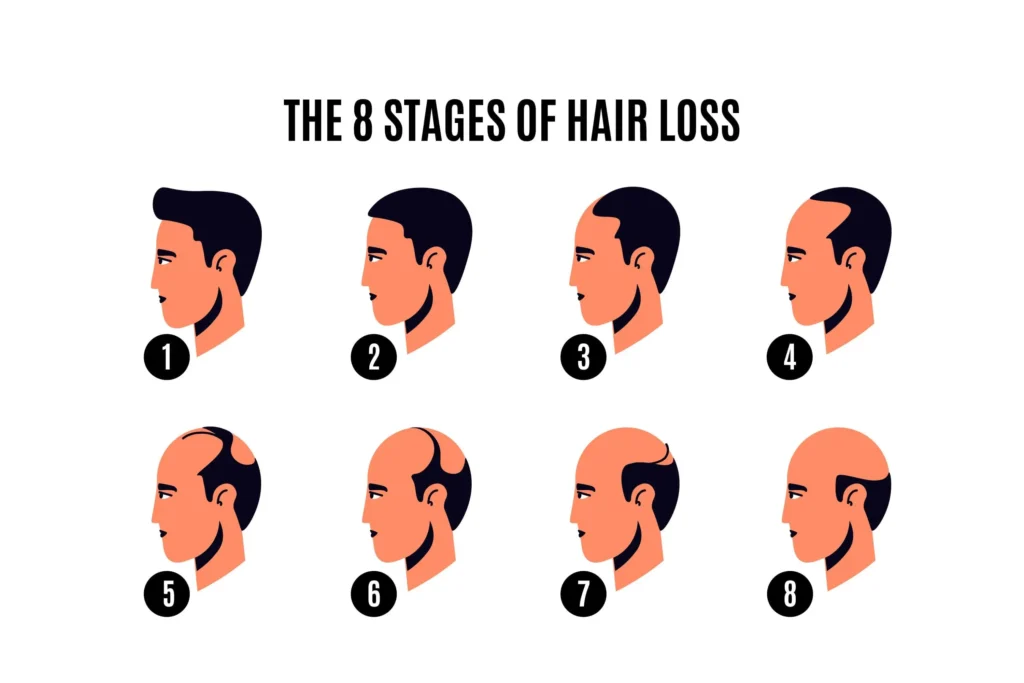
- Stage 1: Minimal or no hairline recession.
- Stage 2: Noticeable hairline recession at the temples.
- Stage 3: Deeper recession at the temples, possibly some thinning on the crown.
- Stage 4: Severe hairline recession and noticeable thinning on the crown.
- Stage 5: The bridge of hair separating the crown and hairline begins to thin.
- Stage 6: The bridge disappears, leaving a larger bald area.
- Stage 7: Only a band of hair around the sides and back remains.
Each stage reflects increasing levels of hair loss, helping to diagnose and plan treatments effectively. Identifying the stage of hair loss early can help in effectively managing and treating the condition. It is crucial for individuals to monitor their hairline and the density of their hair regularly and seek professional advice when changes are noticed.
Symptoms and Diagnosis of Androgenetic Alopecia
The initial signs of MPHL typically include a receding hairline, especially at the temples, and thinning hair on the crown. This often progresses to a more apparent bald spot and may eventually lead to a horseshoe pattern of hair around the sides and back of the head.
How to Get Diagnosed?
Diagnosis of MPHL generally involves a visual assessment by a doctor who can assess the pattern of hair loss. Scalp biopsies, hair check-up blood tests, hormone levels tests, and scalp examinations may also be employed to rule out other conditions.
Can Male Pattern Hair Loss Be Prevented or Reversed?

Prevention of MPHL is challenging due to its genetic nature; however, early detection and treatment can slow or halt its progression. Reversing hair loss is more difficult, but advancements in treatment options have made significant improvements in hair restoration possible.
Treatment Options
Male Pattern Hair Loss, or androgenetic alopecia, affects many men globally, but numerous effective treatments can manage or reverse this condition. Here are some of the primary hair loss treatment options:
1. Oral Supplements
There are vitamins and minerals needed for healthy and strong hair such as Iron, Ferritin, Magnesium, Biotin (Vitamin B7), Vitamin D, Vitamin B, Folic Acid, Calcium.
If there are any deficiencies replacement treatment should be done.
2. Hair Transplant Surgery
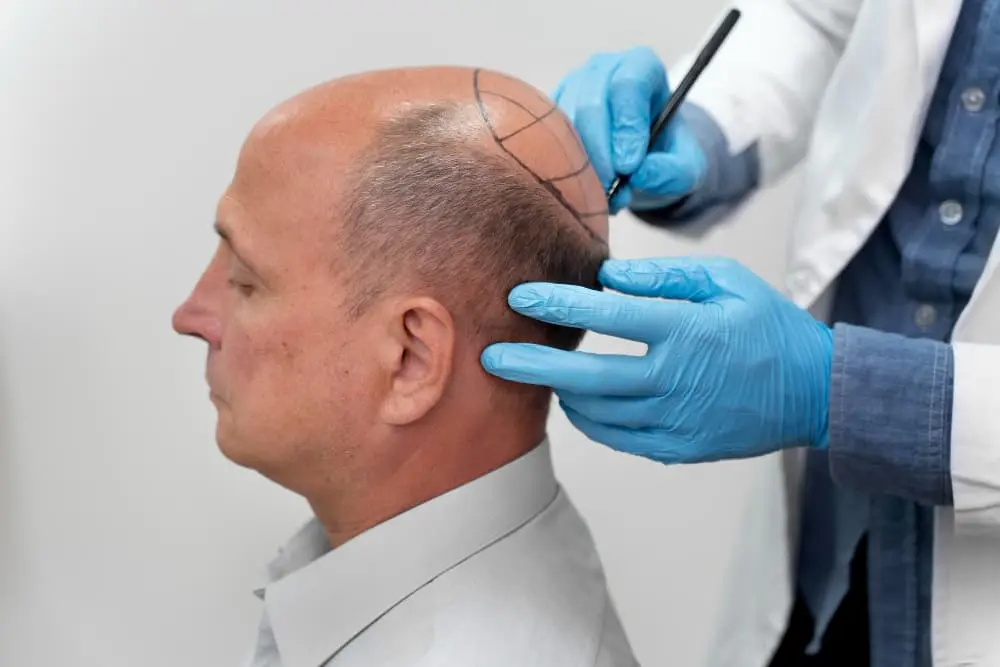
Follicular Unit Extraction (FUE): In this technique, individual hair follicles are extracted directly from the scalp and transplanted to bald spots. This method reduces scarring and has a faster recovery time compared to traditional methods. FUE is known for its natural-looking results and minimal invasiveness.
Sapphire FUE: This advanced version of the FUE technique uses sapphire blades to create the incisions for transplanting hair follicles. The use of sapphire blades allows for more precise and smaller incisions, resulting in less scarring, quicker healing, and better overall outcomes.
DHI (Direct Hair Implantation): DHI involves the direct implantation of hair follicles into the recipient area using a specialized tool called a Choi pen. This method allows for greater control over the angle, direction, and depth of the implanted follicles, leading to a more natural-looking result with higher density.
Stem Cell Supported Hair Transplant: This innovative technique combines traditional hair transplantation methods with stem cell therapy. Stem cells are used to enhance the healing process and promote the growth of transplanted hair follicles, potentially leading to better overall results and faster recovery times.
3. Hair Mesotherapy
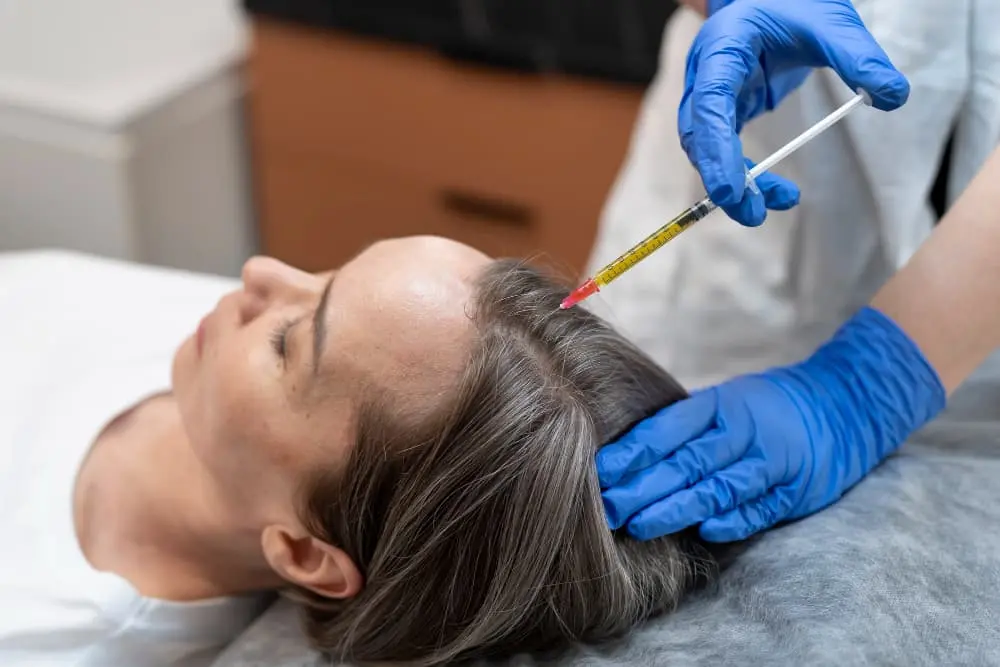
Hair mesotherapy treatment involves injecting a combination of vitamins, minerals, amino acids, and medications directly into the scalp.
Hair mesotherapy aims to improve blood circulation, nourish hair follicles, and stimulate hair growth. It can be an effective method for treating hair loss and improving the overall health of your hair.
4. Platelet-Rich Plasma (PRP) Therapy

PRP therapy involves the injection of a concentration of a patient’s own platelets into the scalp.
This is thought to foster healing and stimulate the growth of hair by increasing blood supply and nutrients to the hair follicles.
5. Stem Cell Treatments
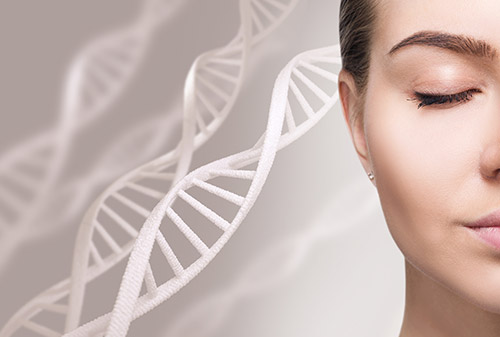
Stem cell therapy for hair loss involves using stem cells to stimulate the growth of new hair follicles. This treatment can help regenerate hair in areas where follicles have become dormant or have been damaged.
Stem cells are known for their regenerative properties, making this an innovative approach to hair restoration.
6. Indirect Stem Cell Treatments
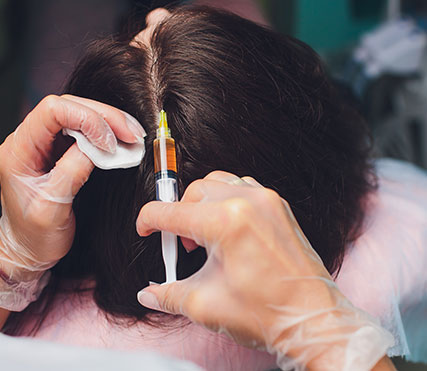
Indirect Stem Cell Treatment uses growth factors and other beneficial components derived from stem cells to promote hair growth and improve scalp health.
Instead of using live stem cells, this method utilizes the bioactive elements that stem cells produce, providing similar regenerative benefits.
These elements are delivered to the scalp, where they work to rejuvenate hair follicles, enhance hair density, and support overall scalp health.
7. Laser Therapy
Low-level laser therapy (LLLT) is a form of light and heat treatment that has been shown to promote hair growth in both men and women. This non-invasive procedure works by enhancing cell metabolism and increasing blood flow to the hair follicles, which can stimulate hair growth and improve hair density.
Devices for this treatment come in various forms, including combs, helmets, and overhead panels, making it a versatile option for individuals seeking non-surgical hair restoration solutions. Regular use of LLLT devices can lead to thicker, fuller hair and is often used as a complementary treatment alongside other hair restoration therapies.
8. Natural Remedies and Supplements
Some men opt for natural treatments and supplements that promote hair health, such as saw palmetto, pumpkin seed oil, and biotin. These natural remedies are believed to support hair growth by providing essential nutrients and inhibiting factors that contribute to hair loss.
Saw palmetto, for instance, is thought to block the conversion of testosterone to DHT, a hormone linked to hair loss. Pumpkin seed oil is rich in essential fatty acids and antioxidants, which can nourish the scalp and hair follicles.
Biotin, a B vitamin, is known to strengthen hair and nails. However, the effectiveness of these natural remedies can vary from person to person, and they are often used in conjunction with more traditional treatments like minoxidil or finasteride for better results. It is important to consult with a healthcare professional before starting any new supplement regimen to ensure it is appropriate for your individual needs.
Hair Transplant Surgery for Male Pattern Hair Loss
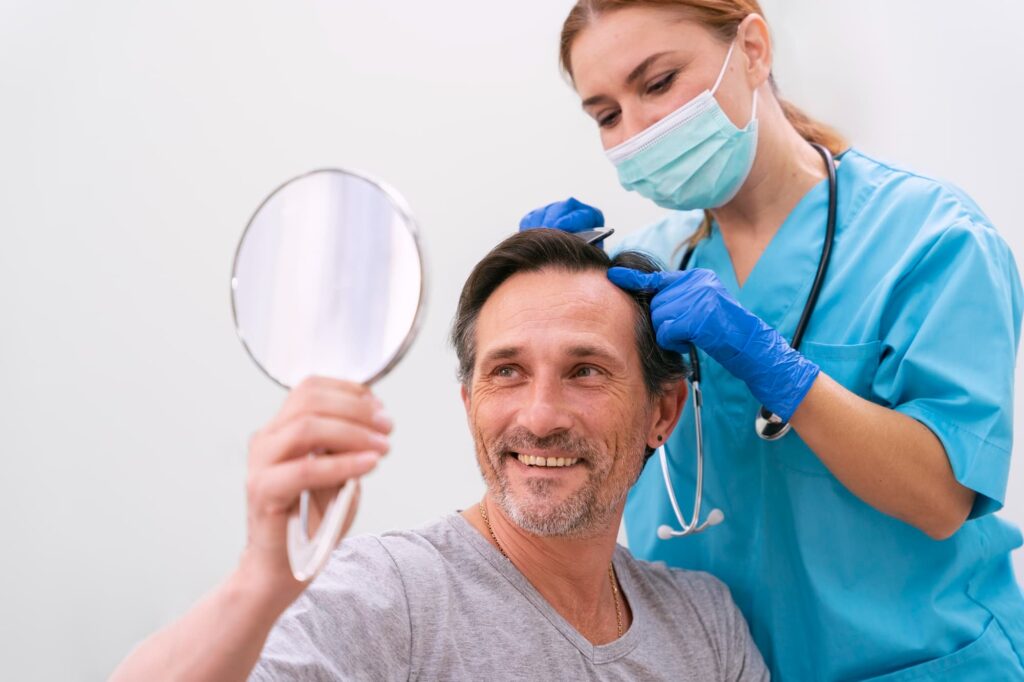
Follicular Unit Extraction (FUE) and Direct Hair Implantation (DHI) are two primary methods of performing hair transplant surgery.
- FUE involves removing individual hair follicles from the scalp and transplanting them to bald areas.
- DHI, on the other hand, involves the direct implantation of hair follicles into the recipient area using a specialized tool called a Choi pen.
This method allows for greater control over the angle, direction, and depth of the implanted follicles, leading to a more natural-looking result with higher density. FUE is generally preferred for its less invasive nature and minimal scarring.
What to Expect During the Procedure?
Hair transplant procedures can take several hours to a full day and are performed under local anesthesia. Post-procedure care is essential for ensuring the success of the transplant and includes following strict guidelines on washing and treating the hair.
Recovery and Aftercare Tips
Post-transplant, it is common to experience some swelling, redness, and discomfort at the transplant site and the donor area. It’s crucial to follow the surgeon’s aftercare instructions, which typically include taking prescribed medications, using gentle hair care products, and avoiding strenuous activities.
Why Choose Turkey for Hair Transplant Surgery?

Turkey, and particularly Istanbul, is renowned for its advanced hair transplant clinics which offer high-quality services at competitive prices. The surgeons in Turkey are highly experienced, often having performed thousands of procedures with high success rates.
Cost Comparison: Turkey vs Europe and America
The cost of hair transplant surgery in Turkey is significantly lower than in Europe and America, making it a favored destination for medical tourists seeking hair restoration services.
Quality and Success Rates of Turkish Clinics
Turkish clinics not only offer competitive pricing but also maintain high standards of quality and boast impressive success rates for hair transplant surgeries. These factors make Turkey a global leader in hair restoration.
Planning Your Hair Transplant Trip to Istanbul
Most clinics offer comprehensive packages that include travel, accommodation, and transportation services to make the process as seamless as possible for international clients.
What to Expect During Your Stay?
Patients can expect first-class treatment from arrival to departure, with multilingual staff available to assist with all needs. The clinics ensure that patients receive all the necessary care and follow-up to maximize the success of their treatment.
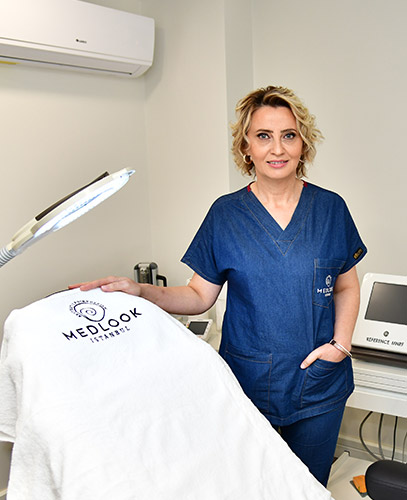
Istanbul Hair Institute: Your Partner in Hair Restoration
- At the Istanbul Hair Institute, we pride ourselves on our state-of-the-art facilities, experienced staff, and a patient-centered approach.
- We offer tailored solutions using the latest technologies in hair restoration to ensure the best outcomes for our patients.
- Our comprehensive care extends beyond the procedure, with dedicated follow-up and care programs designed to ensure optimal results.
This detailed exploration into Male Pattern Hair Loss provides insights into the causes, stages, symptoms, and cutting-edge treatments available, particularly highlighting the advantages of seeking treatment in Turkey. By choosing the right treatment and care, individuals suffering from MPHL can achieve significant improvements in hair density and appearance, boosting their confidence and quality of life.
Recent Posts
-
 Creatine and Hair Loss: What You Need to Know16 Jul 2024
Creatine and Hair Loss: What You Need to Know16 Jul 2024 -
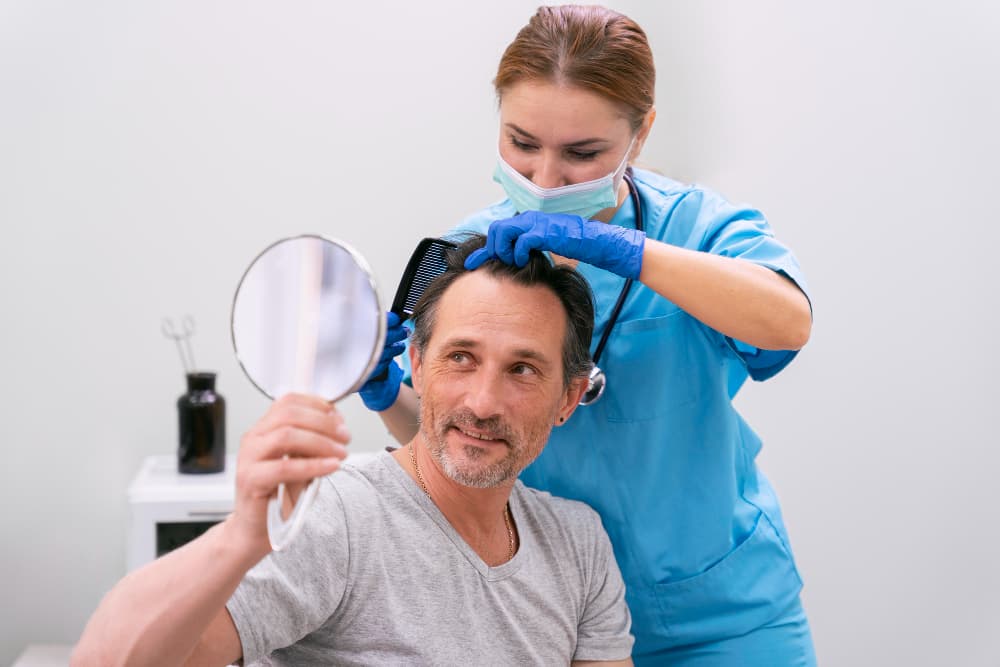 The Best Age for a Hair Transplant09 Jul 2024
The Best Age for a Hair Transplant09 Jul 2024 -
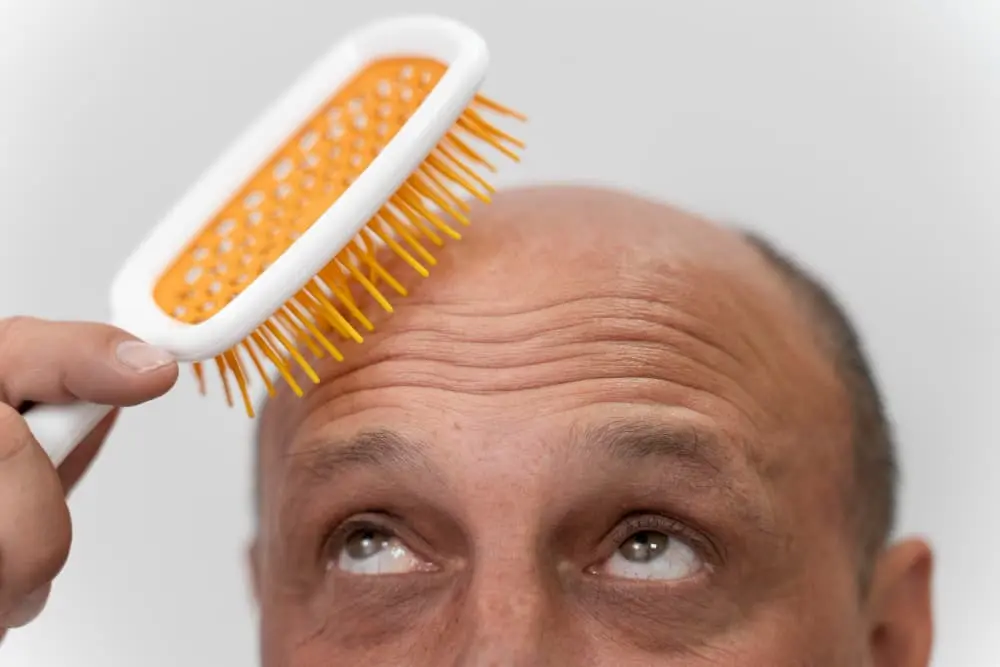 Unveiling the Reasons Behind Hair Loss: A Comprehensive Guide27 Jun 2024
Unveiling the Reasons Behind Hair Loss: A Comprehensive Guide27 Jun 2024 -
 Hard Water and Hair Loss: The Truth You Need to Know24 Jun 2024
Hard Water and Hair Loss: The Truth You Need to Know24 Jun 2024 -
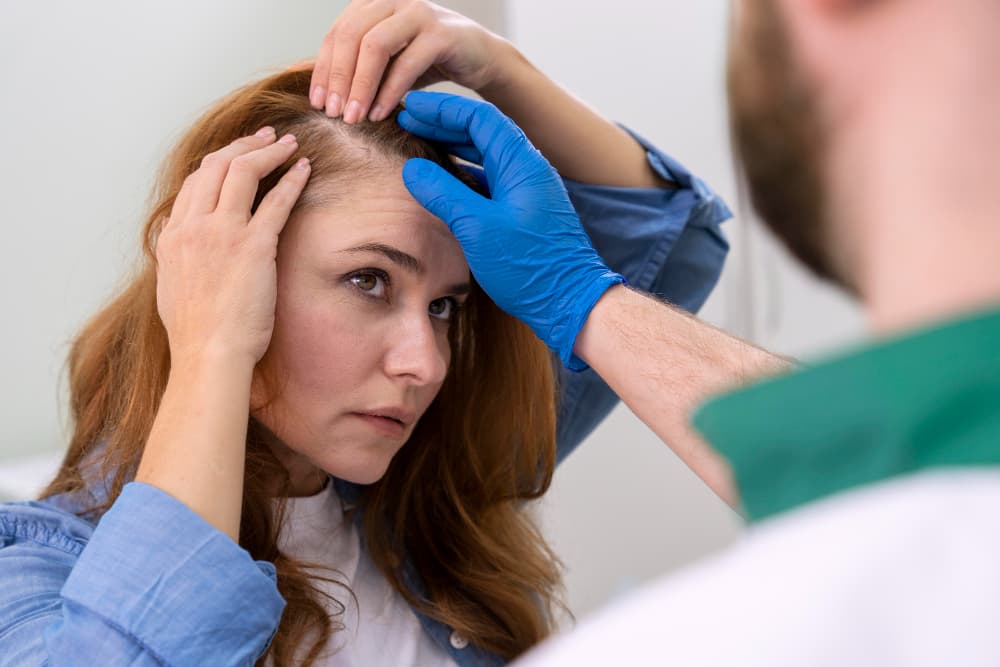 Frontal Fibrosing Alopecia (FFA): Causes, Treatments, and Care24 Jun 2024
Frontal Fibrosing Alopecia (FFA): Causes, Treatments, and Care24 Jun 2024
Opening Hours
- Monday–Saturday: 09:00 – 18:00
- [email protected]

